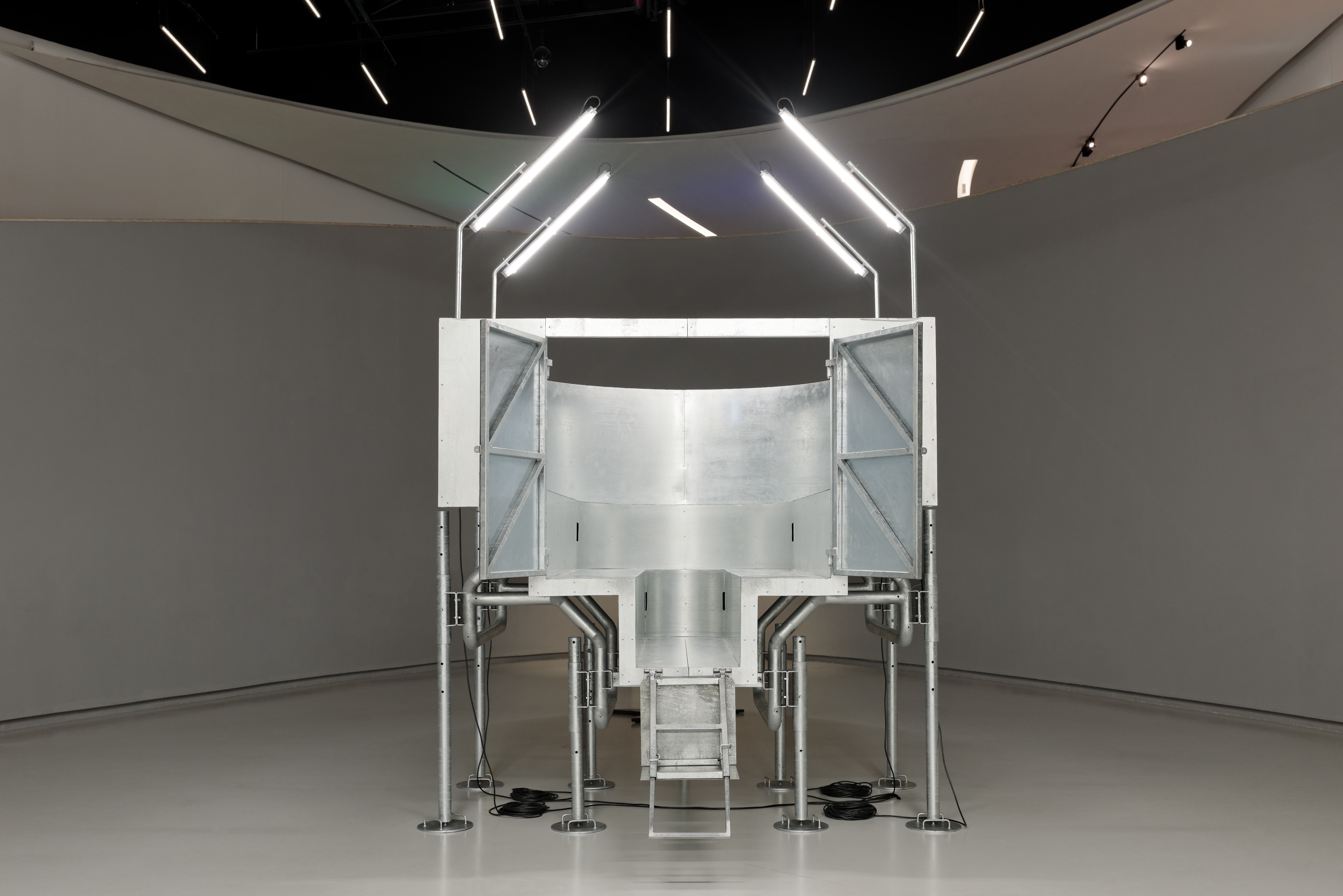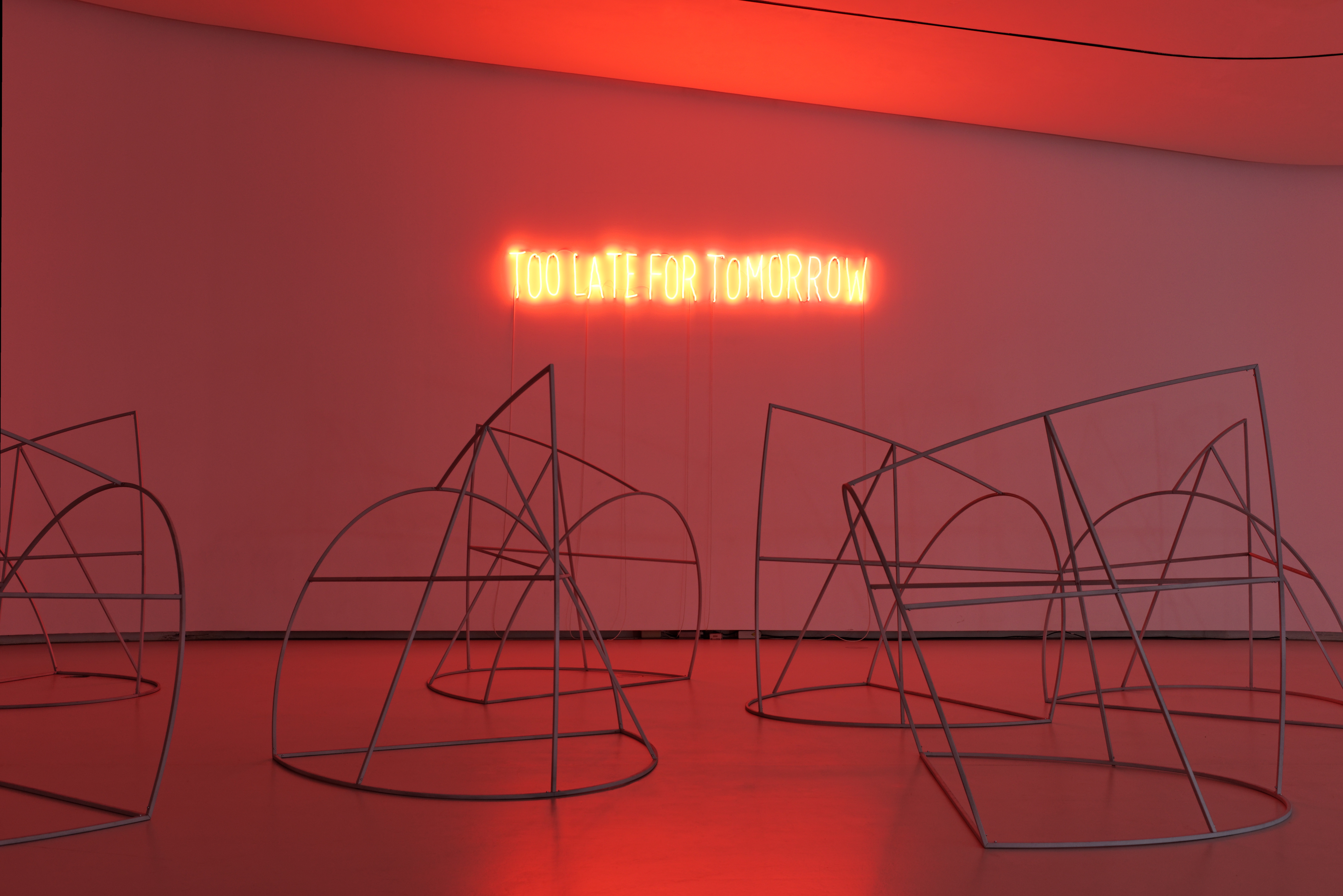︎SCENOGRAPHY
Exist/resist / 2022

Location
Lisbon, Portugal
Client
MAAT
Area
Wall area of 378 m2
Floor area of 226 m2
Material
wood structures, MDF panels, galvanized steel shelves, stainless steel gallows, LED lights
Status
Built - Temporary
Lisbon, Portugal
Client
MAAT
Area
Wall area of 378 m2
Floor area of 226 m2
Material
wood structures, MDF panels, galvanized steel shelves, stainless steel gallows, LED lights
Status
Built - Temporary
Scenography for the exhibition “EXIST/RESIST – Works by Didier Fiúza Faustino: 1995–2022”, curated by Pelin Tan.
Retrospective exhibition of Didier Fiúza Faustino’s work.
Taking its title from two separate pieces (Exist, 2016; Resist, 2017) the exhibition reveals a propelling tension present throughout Faustino’s creative explorations and its continued resonance in face of the aggravating conditions of physical and mental survival in the world today. The central oval room is overtaken by a large white structure with high pannels on which are exposed both framed photographies/drawings and round windows that allow the viewer to enter the creative and personal universe of the artist.
The second room is a reflective one which solicits the spectator to question their daily habits and privileges by displaying metal structures that seem to be narrow shelters tinted in red hues by the “Tool(ate) for tomorrow” neon.
Retrospective exhibition of Didier Fiúza Faustino’s work.
Taking its title from two separate pieces (Exist, 2016; Resist, 2017) the exhibition reveals a propelling tension present throughout Faustino’s creative explorations and its continued resonance in face of the aggravating conditions of physical and mental survival in the world today. The central oval room is overtaken by a large white structure with high pannels on which are exposed both framed photographies/drawings and round windows that allow the viewer to enter the creative and personal universe of the artist.
The second room is a reflective one which solicits the spectator to question their daily habits and privileges by displaying metal structures that seem to be narrow shelters tinted in red hues by the “Tool(ate) for tomorrow” neon.
Photo © David Boureau








